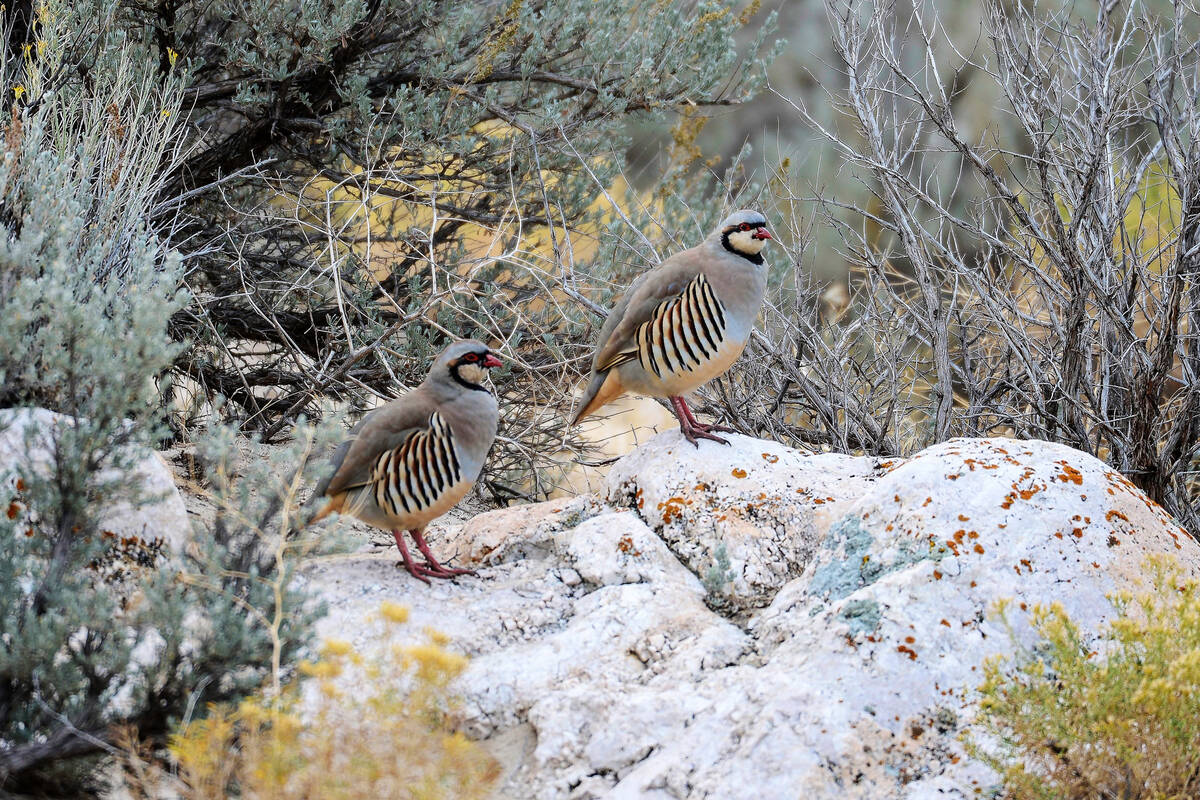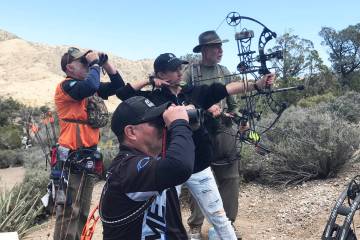Chukar partridge hunters have their work cut out for them
As the pickup slides to a stop in a remote corner of Elko County, I can’t help but chuckle. There in the dusty cloud kicked up by the truck’s tires is a gathering of critters strolling casually along their way. It is obvious they do not care that I have somewhere else to be.
The gathering is the largest covey of chukar partridge I have ever seen. The birds stretch from one side of the dirt road to the other and into the distance, where a small stream of water runs along the dirt road.
A native of the Middle East, the chukar partridge was introduced by the Nevada Fish and Game Commission in 1935 and found Nevada’s rugged landscape to its liking. After the state’s first hunting season in 1947, chukar quickly took their place as the state’s most popular game bird.
Due to ongoing drought conditions, it is unlikely that hunters will find road-blocking coveys when Nevada’s chukar season opens statewide on Oct. 9, but Elko County is still worth considering as an opening day destination. According to results of annual brood surveys by the Nevada Department of Wildlife, portions of Elko County “should provide some good chukar hunting this fall and winter.”
The average brood count in Elko County was 4.9 chicks per adult, with the highest counts of 5.7 and 6.1 seen in the Bruneau River area and the Snowstorm Mountains.
If you are looking for destinations close to the urban environs of Las Vegas, these are not going to fit the bill. However, if you want to get away from the crowds, this part of Nevada is the ticket.
Hunters who are willing to travel for wing-shooting opportunities might also consider mountain ranges in Eureka and Lander counties and the west side of Pershing County.
Chukar populations in these areas showed at least some improvement over 2020 despite ongoing drought conditions. Humboldt County and Washoe County may also be worth a look.
Chukars can also be found in the mountains of central Nevada and southern Nevada, though their numbers are generally lower than those found in the more northern areas of the state.
Southern hunters can find chukars in the Delamar, Meadow Valley, Mormon and Spring Mountain ranges along with the Gold Butte area. Keep in mind that due to the extended drought conditions their numbers will be depressed, and it will take work to find them.
In Utah, where biologists conduct surveys with game cameras on select water sources, the Division of Wildlife Resources also documented low chick production across the bird’s range.
“Chukar hunters can expect to see a below-average year in many areas, with a general south to north trend, with better although still relatively poor production in northern regions of the state,” according to the Utah 2021 Chukar Partridge Update. “Although we had a mild winter, moisture has been lacking; impacting habitat conditions throughout the state, especially during critical nesting and early brooding periods. Summer monsoon rains did return this year and will hopefully lead to improved conditions next spring.”
Though chukar numbers are depressed in both states, there are still chukars on the landscape. That means hunting opportunity for those willing to work. Hunters may have to cover more country in their search than they have in years past, but that is part of what hunting is all about.
Looking forward, chukar and other upland game birds are resilient, and their populations will rebound as weather and habitat conditions improve.
Freelance writer Doug Nielsen is a conservation educator for the Nevada Department of Wildlife. His “In the Outdoors” column is not affiliated with or endorsed by the NDOW. Any opinions he states in his column are his own. Find him on Facebook at @dougwritesoutdoors. He can be reached at intheoutdoorslv@gmail.com






















